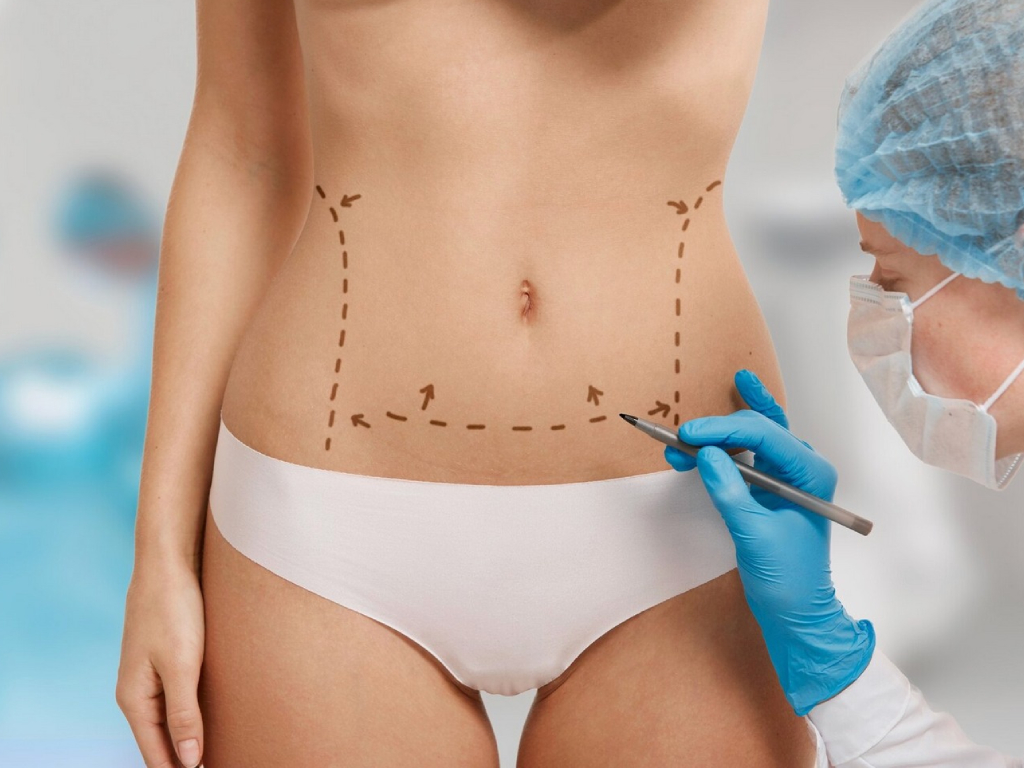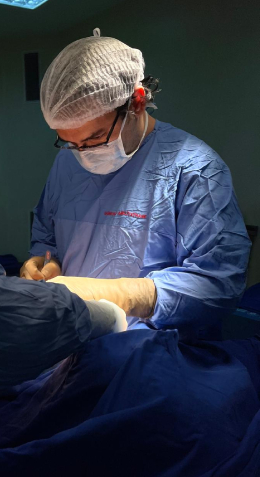Abdominoplasty

Abdominoplasty
Abdominoplasty, commonly known as a tummy tuck, is a surgical procedure designed to reshape and contour the abdomen by removing excess skin and fat and tightening the abdominal muscles. It's often sought by individuals who struggle with loose or sagging skin in the abdominal area, typically due to factors such as pregnancy, significant weight loss, or aging. Abdominoplasty can provide a flatter, firmer abdomen and improve body confidence for those seeking to regain a more youthful and toned appearance.
The term "abdominoplasty" is derived from the Latin words "abdomen" (referring to the area between the chest and pelvis) and "plasty" (meaning molding or shaping). During the procedure, an incision is made horizontally across the lower abdomen, usually between the hip bones, allowing the surgeon to access the underlying tissues. Excess skin and fat are then removed, and the abdominal muscles may be tightened to create a smoother and more toned appearance. In some cases, liposuction may also be performed to further refine the contours of the abdomen.
People choose abdominoplasty for various reasons, but common motivations include dissatisfaction with the appearance of their abdomen, difficulty achieving desired results through diet and exercise alone, and a desire to restore a pre-pregnancy figure. For many individuals, particularly mothers who have undergone multiple pregnancies, abdominoplasty offers a solution to address stretched abdominal muscles and skin laxity that may not respond to non-surgical treatments.
While abdominoplasty can provide significant aesthetic benefits, it is not without risks. Like any surgical procedure, there are potential complications, including infection, bleeding, blood clots, poor wound healing, and adverse reactions to anesthesia. Additionally, there may be risks associated with the specific techniques used, such as the potential for asymmetry, visible scarring, or changes in sensation around the incision site.
Despite the potential risks, abdominoplasty is generally considered safe when performed by a board-certified plastic surgeon in an accredited surgical facility. However, it's essential for individuals considering the procedure to understand the potential risks and benefits and to choose a qualified surgeon with experience in abdominoplasty procedures. Ideal candidates for abdominoplasty are generally in good overall health, non-smokers, and at a stable weight, with realistic expectations about the outcome of the surgery.
Typically, individuals who choose abdominoplasty have one or more of the following concerns:
- Excess skin and fat in the abdominal area, which may be resistant to diet and exercise.
- Stretch marks or skin laxity due to pregnancy, significant weight loss, or aging.
- Weak or separated abdominal muscles (diastasis recti) that contribute to a protruding abdomen.
- Difficulty fitting into clothing or feeling self-conscious about their appearance.
In conclusion, abdominoplasty, or tummy tuck surgery, is a popular cosmetic procedure aimed at improving the appearance of the abdomen by removing excess skin and fat and tightening the underlying muscles. While it carries some risks, it can provide significant aesthetic benefits for individuals seeking to achieve a firmer, more toned abdominal contour. However, it's important for those considering abdominoplasty to consult with a qualified surgeon, thoroughly understand the potential risks and benefits, and have realistic expectations about the outcome of the surgery.


